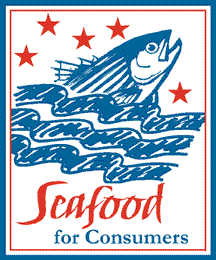
Number 12
February 26, 2000

 |
 |
What are wetlands and what do they do?
“Wetlands may be viewed as one of the most productive environments in the world, covering about 4 percent of the planet. They provide tremendous economic benefits to people through their production of fisheries resources, the maintenance of watertables for agriculture, timber production, water storage and reduction of natural impacts such as watershed flooding and shoreline erosion.” (Schultink and van Vliet, 1997,And what are we doing to them?) “Historically, wetlands were not widely recognized as valuable or appreciated. In fact, wetlands were often regarded as ‘wastelands’ and breeding grounds for insects, pests and disease, and were considered impediments to development and progress. Wetlands were not useful because they were too wet to farm, and too shallow for swimming. As a result of this reputation, wetlands were readily converted to other land uses.” (USFWS &Texas Parks and Wildlife, 1998,
). “Approximately 75% of the Nation’s commercial fish and shellfish depend on estuaries at some stage in their life cycle. Estuaries themselves depend on their wetlands to maintain water quality and provide the basis for food chains that culminate in human consumption of seafood. Many estuarine-dependent species have even closer ties to wetlands in that they feed, take refuge, or reproduce in the wetlands themselves. Without wetlands, these fish and shellfish cannot survive” (Stedman & Hanson, 1998,
).
“Some estimates show that the world may have lost 50% of the wetlands that existed since 1900; whilst much of this occurred in the northern countries during the first 50 years of the century, increasing pressure for conversion to alternative land use has been put on tropical and sub-tropical wetlands since the 1950s.” (Moser, Prentice & Frazier, 1996,). “According to a survey performed by the U.S. Fish and Wildlife Service, approximately 392 million acres of wetlands existed in 1780 in lands that now form the United States. Of that, 221 million acres were found in the lower 48 states. Since that time, humankind has caused a significant reduction in wetlands. Currently, the lower 48 states support only an estimated 104 million acres, or 47% of the original wetland acreage.” (USFWS &Texas Parks and Wildlife, 1998,
).
| State | Total Wetlands Loss |
| California | 90% |
| Connecticut | 74% |
| New York | 60% |
| Mississippi | 59% |
| Louisiana | >50% |
| Alabama | 50% |
| Texas | 50% |
| North Carolina | 50% |
| Florida | 46% |
| New Jersey | 46% |
| Rhode Island | 37% |
| Washington | 31% |
| Massachusetts | 28% |
| South Carolina | 27% |
| Georgia | 23% |
| Maine | 20% |
| Hawaii | 12% |
| New Hampshire | 09% |
Some specifics:
“Channel deepening, maintenance dredging, and dredging and filling to create uplands, have resulted in the loss of 44% of the original (100-year study) wetlands bordering Tampa Bay. In Sarasota Bay, changes in wetland habitat acres from 1948 to 1987 include losses of 35% of its seagrass beds, 45% of mangrove swamps, 85% of tidal marshes, and an increase of 16% of oyster beds. Wetland changes in Charlotte Harbor from 1945 to 1982 include losses of 29% of its seagrasses, 51% of salt marshes, 39% of oyster reefs, and an increase of 10% in mangroves.... In Louisiana, a significant change in acreage in coastal wetlands occurred between 1956 and 1978, when approximately 51% of the state’s emergent marsh and 59% of forested wetlands were lost. During that time period, there was a concurrent 272% increase in acreage used for disposal of dredged material. Other studies have shown that approximately 34% of Louisiana marsh was changed to non-marsh from 1945 to 1980, and that currently there is a net wetland loss of approximately 39 sq. mi. (101 sq. km) annually in coastal Louisiana.... A study in Mobile Bay, Alabama revealed that emergent marsh habitat declined by more than 10,000 ac (4,000 ha), or 35%, between 1955 and 1979. Half of this loss resulted from industrial, commercial, and residential development; other losses were the result of erosion and/or subsidence. Another survey described a loss of 50% or more of submerged aquatic vegetation. The most significant impacts noted in these studies were the direct and indirect effect of dredging…. A decline of the area covered by seagrass and a decline of seagrass species has occurred in Mississippi Sound. Seagrass acreage in 1975 was approximately 60% of that found in 1969, and losses are continuing (Duke and Kruczynski, 1992,Wetlands and fisheries).
The preceding quotes are just a representative sampling from a wealth of information available on wetlands. Even a cursory review of the literature indicates that 1) our inland and coastal wetlands are critical to the ecological integrity of our coastal waters, 2) in the last several centuries we’ve destroyed about half of them, and 3) the destruction is ongoing.
A major threat?
Estuaries, bodies of water connected to the oceans and influenced by the tides, are extremely important to the productivity of our recreational and commercial fisheries. But, while we’ve destroyed half of the wetlands that are so necessary to the health of these estuaries, this fact gets scant mention in any discussion concerning the plight of today’s fisheries and even less attention from the individuals and organizations responsible for the health of our fisheries. The fisheries literature is replete with references to the good old days. Whether those are the days of the first settlers in the New World, the days of the tub trawlers on the Grand Banks, the days of our grandfathers going to the beach or jetty and catching a barrelful of fish whenever they wanted, or the days back in the sixties or seventies before the “netters” took over, they are always wistfully and reverentially used as a glowing example of the way things were “before there was too much commercial fishing.” Never any mention of the intervening wetland loss or coastal development. Give how critical wetlands are to our fisheries, an equally or more compelling argument could be made for those good old days being good because they were “when we had enough wetlands,” but not in the fisheries management world, or in the anti-fishing rhetoric that is playing such an important part in forming public opinion today.Is this because, after a period of rampant coastal development, today we’re doing such a good job preserving and protecting our remaining wetlands and estuaries and fishing is the only activity that we have left to control? According to Duke and Kruczynski (1992,
) and other researchers, we’re still destroying wetlands at an alarming rate - and demographic trends in the U.S. or a weekend drive to the nearest beach will bear their observations out. In the decades from 1960 to 1990 the population density in the coastal United States increased from 275 to 400 people per square kilometer, and today in the area between Boston, MA and Washington DC it’s 2,500 per km2 (Hinrichsen, 1998,
). To keep up with our leeming-like march to the coast we’re building residential and commercial developments in any available space, natural wetland or not. And this clumping of people along the coasts isn’t restricted to the United States. According to Hinrichsen, “Humankind is in the process of annihilating coastal and ocean ecosystems. At the root of the problem are burgeoning human numbers and their ever-growing needs. Population distribution is increasingly skewed. Recent studies have shown that the overwhelming bulk of humanity is concentrated along or near coasts on just 10% of the earth’s land surface. As of 1998, over half the population of the planet — about 3.2 billion people — lives and works in a coastal strip just 200 kilometers wide (120 miles), while a full two-thirds, 4 billion, are found within 400 kilometers of a coast.”
What can be done?
At the same time, and particularly in the U.S., we’re allowing intensive recreational uses of our estuaries to expand in an uncontrolled manner. The United States Environmental Protection Agency wrote back in 1996 “The number of recreational boats in the United States almost doubled from 1970 to 1990 (16.2 million), and is expected to increase by a further four million by the year 2000” (NOAA, 1998,) Note that the EPA’s growth estimate is lower than that put forth by the National Marine Manufacturers Association, but percentage-wise the EPA estimate corresponds quite well to the boating expenditure increases estimated by the NMMA.
According to the NMMA, in 1997 of the almost 12 million powered recreational vessels in use in the U.S., 7.9 million were propelled by outboard motors. In the words of the NMMA (on the Environmental FAQ section of the Association website) “The scientific data clearly indicates that although 20-to-25 percent of the fuel consumed by an outboard bypasses the combustion process and exits the exhaust, only a fraction goes into the water.” (NMMA, 2000,
). We can estimate that about half of the recreational boating activity in the U.S. is in coastal states, and in 1989 the EPA estimated that the average annual fuel use by boats in coastal states was 111 gallons (EPA). Thus, given the EPA predicted increase in the size of the recreational boating fleet, about 100 million gallons of unburned fuel (gasoline and additives - such as MBTE, the highly soluble octane enhancing ether that has been found contaminating thousands of municipal waste supplies across the country - see
for a discussion of MTBE contamination of reservoirs through boating activities) are being released by boaters in pursuit of their sport every year. If the “fraction” released that the NMMA refers to is “only” 25%, that’s still an 25 million gallons of gasoline, etc. making their way into our estuaries and coastal waters every year.
(Note: For more information on the spectrum of impacts of boating on estuarine productivity, see the proceedings of the Woods Hole Oceanographic Institution's The Environmental Impacts of Boating workshop
, and for more on the environmental impacts of two-stroke marine engines see the Blue Water Network's website
.)
As far as the population growth on the coasts, this appears to be a worldwide trend that is probably beyond the ability of any organization to control, as is much of the nonpoint source pollution that will inevitably accompany it. We have slowed wetland loss in the U.S., which is a positive sign. As far as estuarine decline, as we’ve discussed before (FishNet USA #4), the fisheries management establishment has a large and vested interest in maintaining and expanding the recreational use of our waterways. This interest is expressed through the programs and actions of our fisheries managers at the state, regional and federal levels. Until this situation is addressed, it’s hard to imagine any substantive steps being taken. From an overall resource management perspective, an objective apportionment of the blame for declining fisheries, rather than a knee-jerk “blame it on overfishing” response, would at least force us to begin to consider the problems caused by wetland loss, coastal development, and the unhampered growth in the recreational use of our waterways.

![]()
| FishNet USA is distributed to over 1500 elected and appointed officials, media representatives, individuals and organizations with an interest in fisheries issues via fax and email. It is supported by Atlantic Capes Fisheries, the Fishermen’s Dock Cooperative, Lund’s Fisheries, Export, Inc., Agger Fish Corp., the National Fisheries Institute and Viking Village Dock |